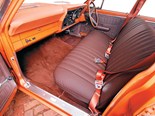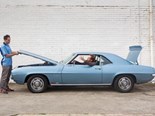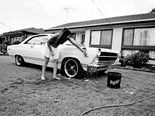Car audio explained - audio options for your classic
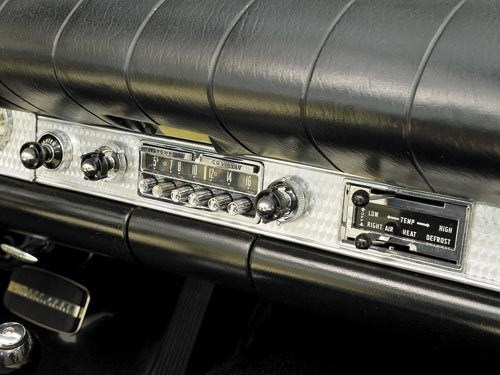 Car audio
Car audio

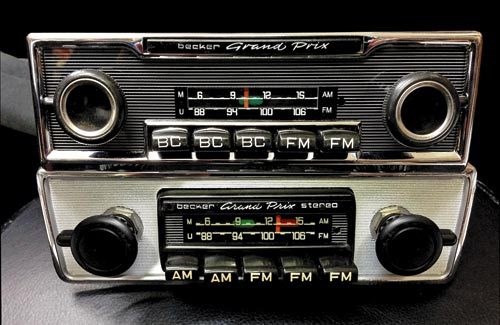 Fully refurbished Becker radio
Fully refurbished Becker radio

 Head units - in-dash radios with many controls
Head units - in-dash radios with many controls
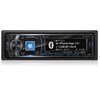
 Classic styling with modern graphics
Classic styling with modern graphics
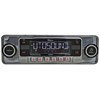
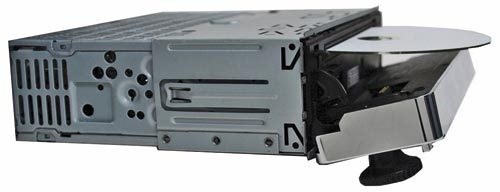 Older-style facade with modern system behind
Older-style facade with modern system behind

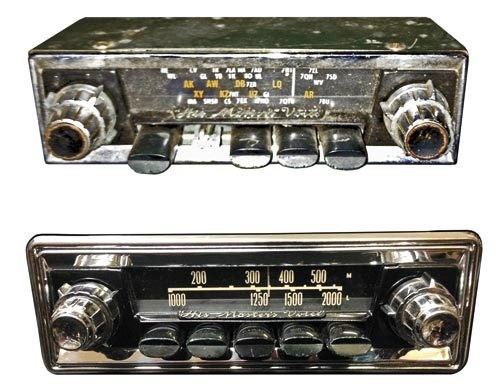 HMV unit before and after restoration
HMV unit before and after restoration

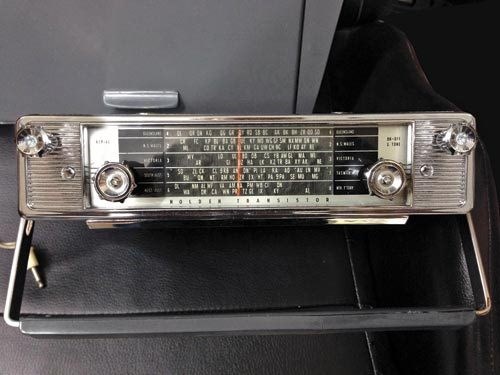 Holden diamond dot
Holden diamond dot

 In-dash, retro-look radios - with the ease of a modern system
In-dash, retro-look radios - with the ease of a modern system

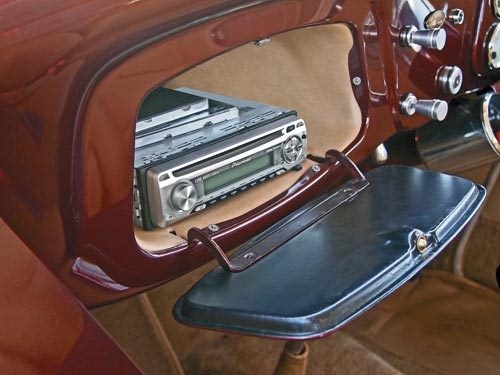 'No-holes' stealth installation of a new, full-feature radio
'No-holes' stealth installation of a new, full-feature radio

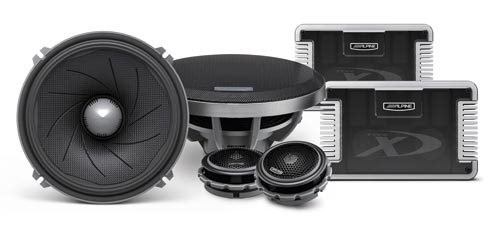 Alpine's SPX-17PRO component speakers
Alpine's SPX-17PRO component speakers

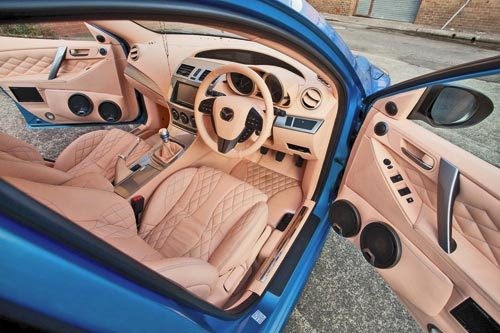 Oval or round speakers can be located on parcel shelf, or underneath
Oval or round speakers can be located on parcel shelf, or underneath

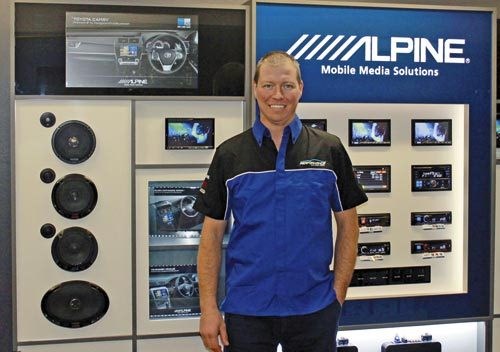 Brett Hill - Performance Car Audio
Brett Hill - Performance Car Audio

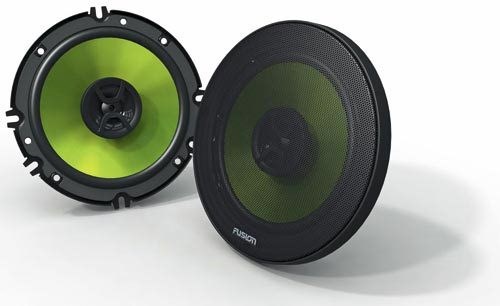 Multiple mounting holes help with direct replacement
Multiple mounting holes help with direct replacement

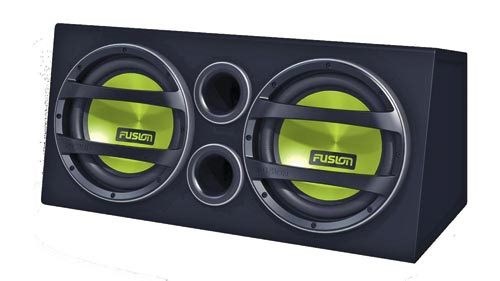 FUSION CS-AW2120 Active twin subwoofer
FUSION CS-AW2120 Active twin subwoofer

 FUSION PP-SW120 12-inch Powerplant Subwoofer
FUSION PP-SW120 12-inch Powerplant Subwoofer

 Discrete restored original unit for old car style
Discrete restored original unit for old car style
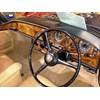
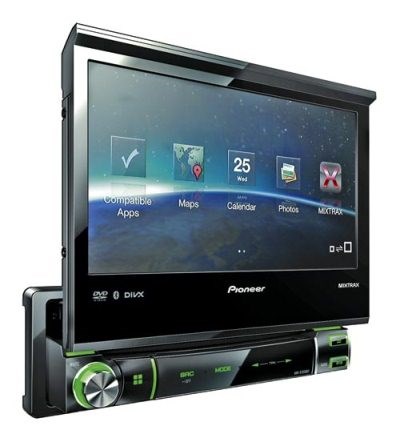 Pioneer with a seven-inch display at the touch of a button
Pioneer with a seven-inch display at the touch of a button



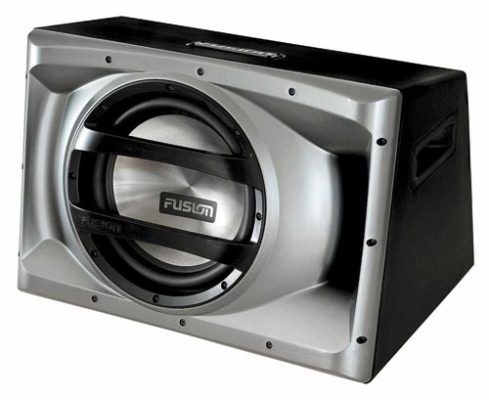

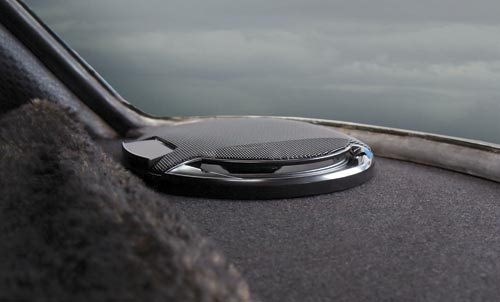


|
|
Car audio
|

|
|
Fully refurbished Becker radio
|

|
|
Head units - in-dash radios with many controls
|

|
|
Classic styling with modern graphics
|

|
|
Older-style facade with modern system behind
|

|
|
HMV unit before and after restoration
|

|
|
Holden diamond dot
|

|
|
In-dash, retro-look radios - with the ease of a modern system
|

|
|
'No-holes' stealth installation of a new, full-feature radio
|

|
|
Alpine's SPX-17PRO component speakers
|

|
|
Oval or round speakers can be located on parcel shelf, or underneath
|

|
|
Brett Hill - Performance Car Audio
|

|
|
Multiple mounting holes help with direct replacement
|

|
|
FUSION CS-AW2120 Active twin subwoofer
|

|
|
FUSION PP-SW120 12-inch Powerplant Subwoofer
|

|
|
Discrete restored original unit for old car style
|

|
|
Pioneer with a seven-inch display at the touch of a button
|

|

|

|
What are the options for a collector car system?

|
|
Car audio explained
|
Car audio explained
CHOICES, CHOICES
Ipod connectivity, stealth systems, woofers...let us demystify the whole damned car audio business for you!
Whether it’s Bach or Slayer that blows your hair back, or you just want to hear the Aussies lose yet another Ashes series, a good sound system makes for a greatly improved driving experience.
Knowing that there’s a lot of information to know for a perfect car entertainment system installation, Unique Cars asked the experts for sound advice.
When you’ve decided on a system, the first question is will I self-install or go to a professional? Many car audio brands have colour-coded or one-way connectors to assist plug ’n’ play, so it’s easy to install a basic system. Problem is, there’s a fair whack of prior knowledge needed, like how to use wire gauges, using a grommet when you pass a wire through a hole drilled in a steel panel, matching speakers to amplifiers, the essential need for a fuse at the battery and much more.
Big outfits like Clarion claim that the great majority of repairs it is called on to perform are a result of owners installing with not enough knowledge, so it pays to go to a specialised installer. Besides, if you use a factory-approved installer some brands double their warranty.
Don’t hesitate to ask a store what each techo-sounding term means and for product advice – they’re happy to explain, after all, you might buy something, and it’s better than appearing to know it all and missing out on very useful information.
Top-notch installers regularly see owners who have "saved money" by going to a cheaper installer, only to present for the whole deal to be ‘fixed’, as the sound system sounds awful. The simple fact
here is, any money saved is well and truly soaked up by the cost of having a pro correct the entire set-up.
Original radio upgrading to meet modern standards
Radios in cars were an optional extra in many cases and the few correct vintage models left are often in very poor condition, needing experienced restoration work. In this you’ll need the services of a specialist restorer in Australia, like Nostalgic Wireless Company in Victoria. The outfit’s brains trust, Nick King, can restore old radios, and even add modern circuits. Then the vintage radio can look original but with modern features like FM and iPod connectivity.
Replacing the original radio with a new retro radio
New retro radios look authentic and come with most modern features, lower power requirements and less need for regular service than the oldies. With any radio, the available depth behind the dash is a deal-breaker. Best to avoid cutting a hole in the dash until you check the radio is not too deep for the position!
A stealth installation of a new system
This option offers all the features of modern entertainment, including iPod connectivity, however may need a specialist installer to locate the head unit in the glovebox or other hidden area, like under the seat or in the boot. Operation is often by remote control, allowing complete use of the unit’s features, without having to have direct access to the unit itself.
Wired remotes, found in some marine entertainment ranges, such as FUSION, are perfectly suited to cars too. With the wired remote, the head unit can be in any place that’s accessible to a reception aerial – like the boot, though a wired remote itself needs to be accessible in the dash, centre console or inside the centre storage compartment.
Boost an existing system with a built-in or plug-in Active Subwoofer.
An Active Subwoofer is a subwoofer speaker plus amplifier all enclosed in one ready-to-go box. The Active Subwoofer can provide powerful bass with no new holes needing to be drilled in your car and can even be stored at home when not in use, for peace of mind.
Boost an existing system with a wired subwoofer
Wired subwoofer amplifiers often have extra channels so more wide-range speakers can also be added too. This can be a powerful upgrade. However, if the existing radio sounds awful, then it will simply be awful at a louder volume!
Better speakers
Where a factory system is nearly acceptable, a noticeable improvement can be achieved stealthily by simply changing existing speakers for the best quality speakers you can afford. Often an immediate increase in volume and quality can be heard, but get advice from your dealer first. Carefully match the impedance (ohms) and power rating to the original speakers to avoid damaging equipment or even lowering volume – the opposite of the upgrade aim.
How do new speakers improve a system’s sound? One car manufacturer buyer bragged he never paid more than two dollars per speaker! Crummy speakers are sure to deliver bad sound. Sometimes I’ve added tweeters for a great improvement, however to avoid damage, it’s essential to have a crossover (see ‘Tweeters’ in this article). If you find this upgrade makes the sound too sharp and/or emphasises hiss, a dropping resistor can be added, alternatively a level control or compensation network.
A new installation with a top brand radio.
This suits drivers who don’t need to keep their car stock standard. FUSION, Alpine and other top brands have in-dash radios that accept music streamed from devices like an iPhones. Some also play music stored on a USB stick.
Pioneer’s single DIN size head unit has a motorised opening large screen when in use, which can show Navigation and more. Most times the quality and reliability of a radio system is in direct proportion to what you pay, though some quality systems are on special from time to time.
SHOW ME THE MONEY
The all-important question, how bloody much?
We are not trying to duck the question here, but the truth is prices range from under $50 to the sky’s the limit – especially for custom systems. The formula is dead easy, the more you pay, the far better the sound and reliability. Of course, you should take a sensible approach. There is a bit of wank factor here, and often you don’t need to spend huge amounts to achieve some pretty good results. The real key is to talk to the right people, there are quite a few cowboys out there. We recommend you do your research, talk to a reputable player in the industry and you won’t go far wrong.
A good tip to find the sound that best suits you and indeed your application is to listen to systems at good outlets, then let your ears decide, along with taking solid advice from experts.
Heres some more more information: www.aaa1.biz/u/1.html
EVERYTHING OLD IS NEW AGAIN
A brand new head unit and speaker system in an old car...yeah, kind of greates doesn't it? Well, we might just have the answer right here...
Nick King’s Nostalgic Wireless is one of the few outfits we’ve found that restores vintage car radios. Nick says most people bring their own classic radio or send them from all around Australia for repair, conversion to AM/FM or iPod input. Specialist expertise is needed for valve radios in poor condition, as traditionally, manufacturers jammed parts and valves into whatever space was available. Transistor car radios have germanium transistors known for their unreliability, with old technologies wearing and deteriorating.
Not all radios are faulty – the problem can be external. Nick regularly receives radios that had their battery polarity connected around the wrong way, or the wrong impedance speaker was used or with shorted speaker wires in the car or indeed the speaker itself shorted inside.
An example: Transistors have a preferred impedance – usually 15 ohms in older Aussie cars – and the best way to blow the output is by adding a couple of modern speakers, which can be as low as 1.5 ohms if wired in parallel. When the radio is fixed, if these external problems remain, the radio will blow again if not sorted first.
Old aerials can stop receiving, too, when rust or other shorts result in no signal. Another aerial problem surfaces after repainting a car and the aerial base no longer has good contact to earth (using the car body). In that case, identify the part of the aerial mount that needs to connect electrically to the car body and ensure good clean contact.
It’s even possible to have an old vintage radio rebuilt inside into a modern AM/FM radio, which looks the part and supports the original look yet has modern, clear and powerful sound. The new ‘heart’ can support fader, bass and treble using the original controls on the radio and run up to four speakers. Options include iPod input, Bluetooth, MP3 or even a CD Walkman. (These mods are also available for vintage home radios too and Nick has them in stock, or you can supply our own). If you prefer a radio restored as fully original, an FM module can be added with no change
to original parts.
Nostalgic Wireless acquires radios worldwide and has a stock of in excess of 600 radios, ranging from 1926 to 1980 – the cut-off era for its restorations.
Contact Nostalgic Wireless on (03) 9499 2495.
THE RULES
We went to an expert to get his top ten tips when it comes to car audio...Performance Car Audio is one of the best car audio installation stores in Australia. Owner Brett Hill is going to make it a whole lot less convusing...
1
Do your research on the radio and system you like and always use reputable brands.
2
Choose a radio that’s best suited in appearance for the era of the vehicle.
3
Always use quality wiring/cabling for the installation of any stereo system as not all cables are as good as they look. Aluminium with copper coating is used frequently in cheap wiring kits. I prefer to use Stinger, well known throughout the country and used by many retailers. A price and quality range is available to suit all applications. In some vehicles old wiring systems are not able to run late model stereos, as the wires are too thin to handle the power. This is solved by running thick cables direct to the main battery and sometimes relays are employed.
4
When installing speakers in the rear parcel shelves of cars, be aware the car’s metal cannot be cut or changed in any way from factory. It becomes a roadworthy issue, unless an engineer has approved the modification. Mostly we can make spacers that enable large speakers to sit below the shelf and replay through the factory holes.
5
There are a lot of fitting products available to assist in installing equipment like speakers and CD tuners – e.g. Fascia fitting kits and fibreglass moulded pods, allowing speakers to fit in locations they normally would not.
6
When purchasing products use retail outlets wherever possible as Internet purchases don’t offer advice, system design and warranty back up. Even worse, the new or used equipment may have faults.
7
Always have your products installed by a qualified installer/technician.
8
Original car radios not in working order can be left in factory positions to retain the correct appearance, with a new stereo installed out of sight in the glovebox or under seats. Wireless remote controls are available for these applications and are commonly used.
9
A few radio brands have an old factory appearance with new technology inside, like iPod compatible, USB in, Digital Tuner, AUX in for MP3 portable devices – including RCA for external amplifiers – all available hidden at the rear of the unit.
10
Sound deadening materials are popular to enhance sound quality. Rattling panels are silenced – caused by speakers or any other reason – and they help block out road noise. The most popular brand is Dynamat.
Established over 23 years ago, Performance Car Audio Visual has grown and evolved into an industry-leading car audio/visual and accessories supplier. Business owner Brett Hill has more than 25 years’ experience within the industry.
Contact Performance Car Audio on (03) 9729 8133.
*****
You'll hear a lot of confusion jargon when it comes to this stuff. Here's what a lot of it means...
Head Unit:
The Head Unit is the radio itself with all controls.
Watts:
You’ll see watts quoted as RMS, Rated Power, Peak and others, so rely on good brands. Watts is the output power of an amplifier, broadly calculated as volts multiplied by Amps (current), or in the case of speakers, the maximum power they can handle.
Distortion, clipping:
The worst distortion is ‘clipping’ – an amplifier overdriven. You want to avoid this as damage is likely.
Decibels and SPL:
The decibel (dB) is a measurement of sound pressure (SPL), loudness or volume levels.
SQ:
Sound quality.
Amplifiers, bridged, multi-channel:
In a bridged amplifier, the power is much greater. Multi-channel amplifiers often drive a subwoofer, front stage plus rear speakers.
Loudspeakers and watts:
It’s vital to match the power of an amplifier to the speakers. When a speaker is a much higher capacity (and/or of higher impedance) that can damage the amplifier or the speaker. Also lower power rating than the amplifier (or lower impedance) can damage the amp or speaker.
Peak Input Power:
The amount of power a voicecoil can withstand for short periods of time.
Subwoofers:
The big sound, big bass speakers in a system. The easiest upgrade is an amplifier and subwoofer in the one box or tube, called an Active subwoofer.
Voicecoil:
A coil of wire in the centre of a loudspeaker.
Speaker cone:
Manufacturers make cones from materials like rigid polypropylene and even aluminium.
Driver:
Alternate name for a loudspeaker.
Bass and resonance:
The low frequency sound. Bass is between 20Hz and about 400Hz. Bass with a strong unwanted peak or resonance is called boomy, rather like resonance in a muffler.
Midrange:
This is sound in the voice range, about 200Hz to about 5kHz.
Treble:
High sounds, usually in the 5-10kHz band.
Coaxial speaker:
Coaxial speakers have a large cone for the low range, and a smaller tweeter for the high spectrum.
Component speaker:
Designed for one range only, be it sub, low, mid or treble.
Impedance and Ohms:
An amplifier has a preferred impedance out which is quoted in Ohms, a speaker has an optimum impedance, also in Ohms. Match these to each other and you have the correct loading, mismatch and one or
both parts could be damaged.
Class:
Amplifiers are built with different output classes, like A, AB through to class D. Class A is usually the best quality, as current flows all the time and there are no crossover distortions, however class D has been highly refined recently and offers great sound, cool running and low prices.
DIN:
Deutsche Industrial Norm – a German spec. that indicates the size of a radio, widely used in Australia.
Ground and Ground Loop:
Chassis connection, usually 12 volts. Ground Loop occurs when a voltage exists between two separate ground points.
Speakers in Phase:
Loudspeakers sound way better when the speakers all move in and out on a note in unison. Installers may check phase using a meter, though there are manual methods of checking too.
Enclosure or baffle, port:
An enclosure is a speaker box, usually sealed (infinite baffle) as most loudspeakers perform well in a sealed box, or subwoofer box with unique shape and tuned ports. Also known as a Bass Reflex vented enclosure.
Front Stage:
Live music performances are on stage in front of the audience, so competition enthusiasts replicate that stage in their car. Alternatively ,drivers who just want to listen to good sound can have most sound from the rear.
DSP:
Digital Sound Processor, which can adjust tone curves and also make sound more like a performance in a particular area, like a concert.
Unique Cars magazine Value Guides
Sell your car for free right here
Get your monthly fix of news, reviews and stories on the greatest cars and minds in the automotive world.
Subscribe

.jpg)









